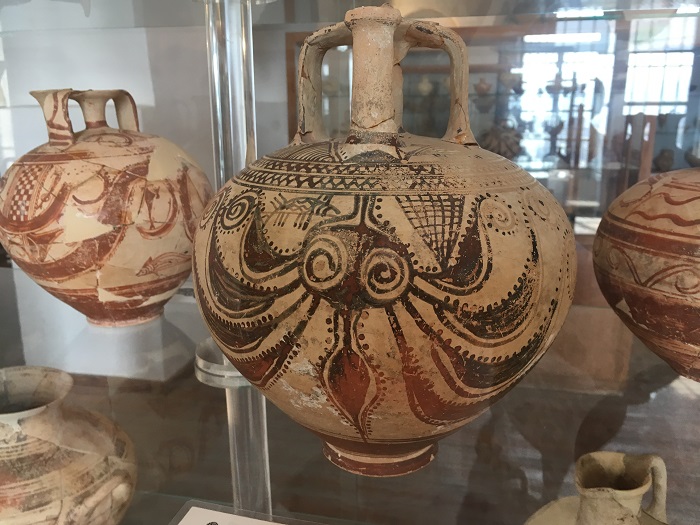
Join Thor and me as we tour the ancient treasures on display in the Archaeological Museum of Naxos.
NOTE: Since our recent trip to Greece to research more settings for my novel-in-progress, THE ARIADNE DISCONNECT, Thor and I knew we had to return to this magical region. My first entry in this new blog series posted here on Saturday, 10/20/2018. It gives an overview of our rambles from Athens to seven islands in the Dodecanese and Cyclades groups, ending our ferry-hopping pilgrimage on the anciently sacred island of Delos.
Fertile Naxos in the Cyclades Islands has been continuously occupied since at least 4000 B.C., and the Naxos Town (also called Hora or Chora) museum offers a lovely selection of artifacts from the Neolithic period through Roman occupation. It’s housed in a Venetian building grafted onto earlier Frankish fortifications, including two stone towers. Built around 1700 A.D. for a Jesuit School, it claims Greek novelist Nikos Kazantzakis (author of the wonderful novel Zorba the Greek) as a student. Apparently he was rather rebellious against the rules….
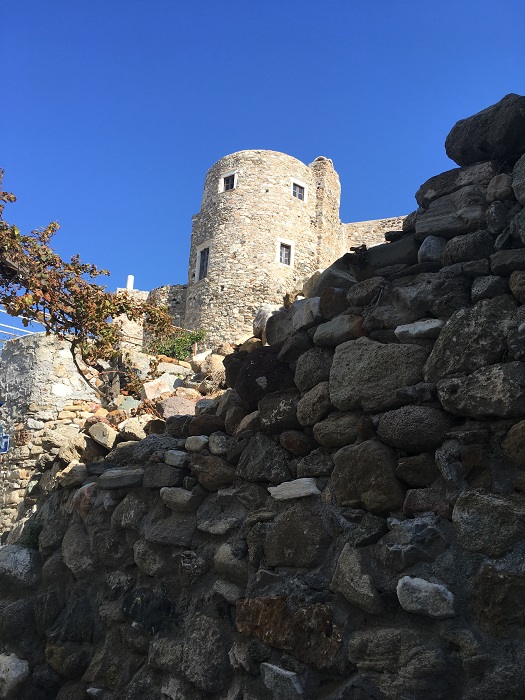
It’s easy to get lost in the labyrinth of narrow, cobbled lanes and tunnel-like passages that wind upward to the top of the town hill, a deliberate plan in many of the island settlements to slow and confuse pirates and other attackers arriving in the harbor. Thor had to duck.
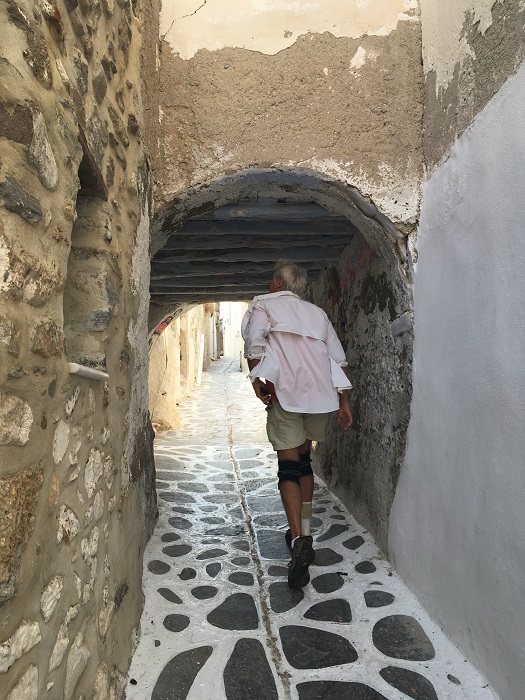
The view from the 4th-story parapet of the museum:
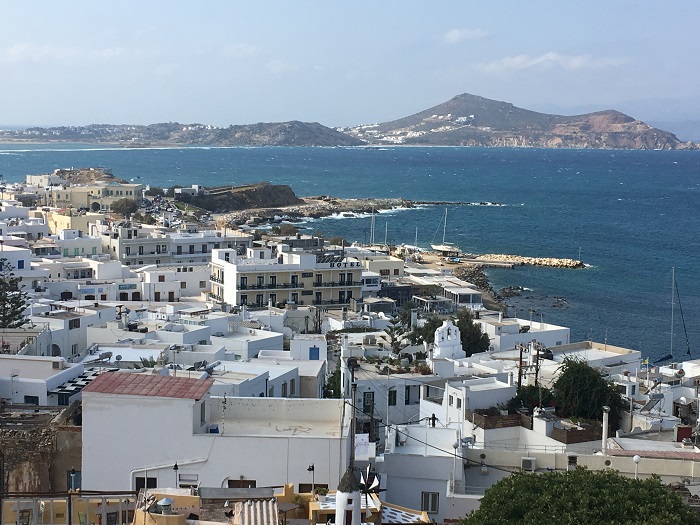
Early Neolithic finds from local excavations include this earliest gold piece:
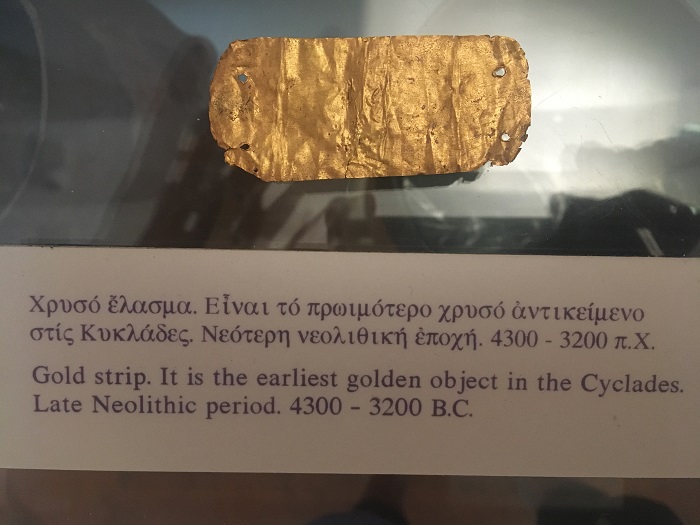
Also these unusual obsidian spear points:
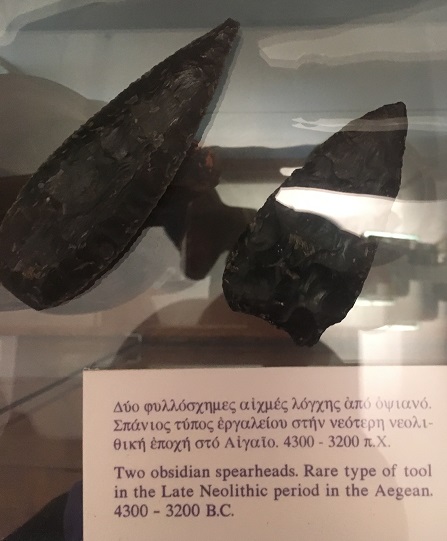
These early pottery examples were accompanied by the same type of shells that Thor and I found in our snorkeling around the islands, and they come in a variety of lovely colors and markings. The museum didn’t indicate what use they might have had, for example in trading.
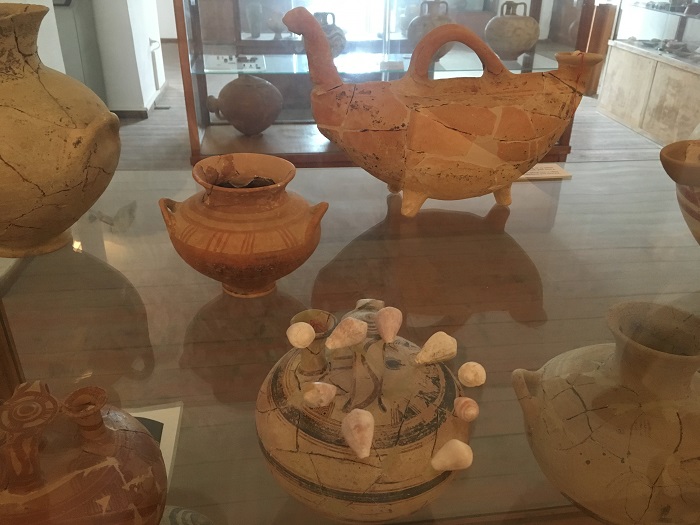
The Cyclades Islands are known, naturally, for the marble Cycladic sculptures of distinctive, sleek style that has influenced some modern sculptors like Henry Moore. Most of the figurines were found in grave sites (many of the sites, unfortunately, looted and damaged). Most of them are stylized female figures. These examples are carved of Naxian marble, from the Middle Cycladic period around 2500 B.C.:
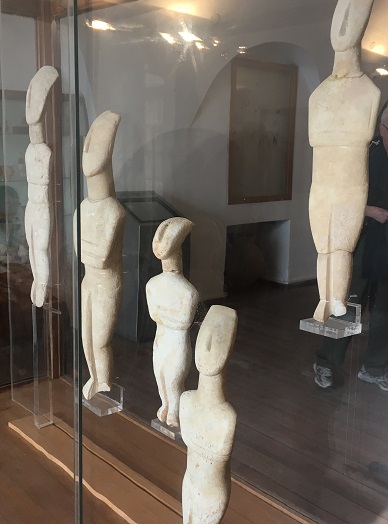
The arms-crossed pose is very common, and the sizes range from palm-size to life-size. This large figure greeted us near the entrance to the museum. (I apologize for the photo quality of many of these — because of the reflective glass cases, it was hard to get decent images.)
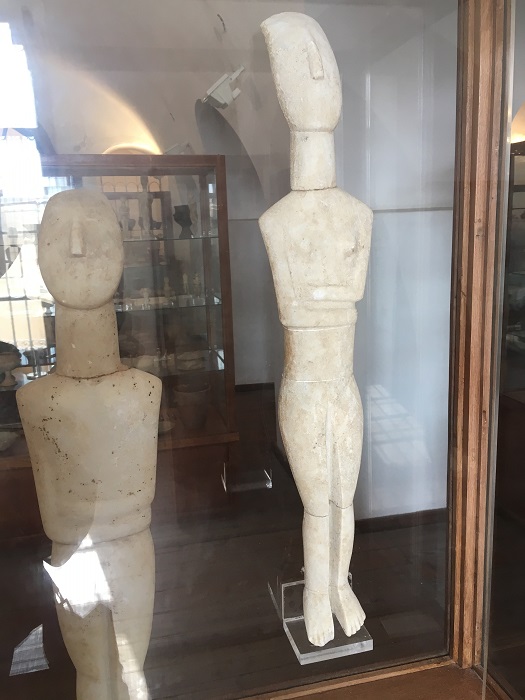
The Cycladic culture arose somewhat before the Minoan culture on Crete, and Naxos was an important trading island. By the end of the Late Cycladic period, around 2000 B.C., the Minoans had gained prominence in culture and trade in the area, and apparently the two cultures somewhat merged. Because of various geologic upheavals such as earthquakes and the eruption of Thira (Santorini), both Cycladic and Minoan cultures faded and were absorbed by Mycenaean incursions from mainland Greece.
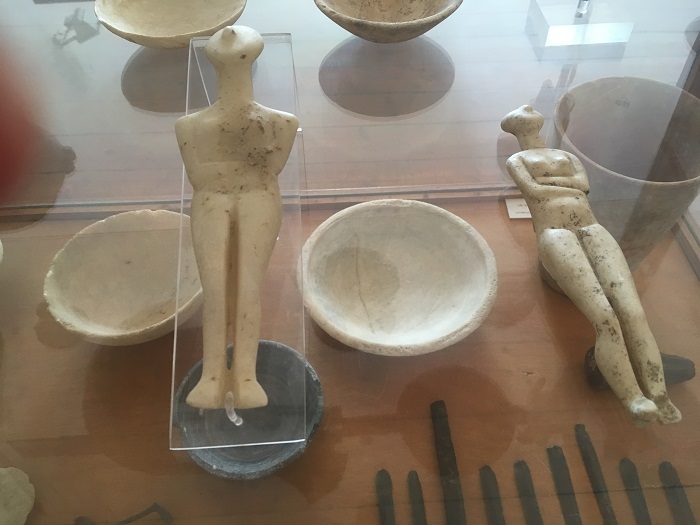
Male figurines are more rare, and the sitting figure below is also unusual. These are from the Early Cycladic period, around 3000 B.C.:
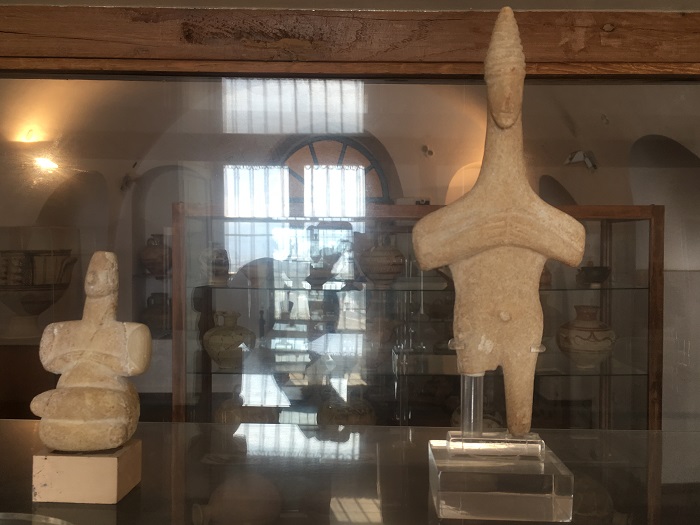
Even earlier may have been the headless figurines that evolved from very abstract violin-shaped figurines as early as 3300 B.C.
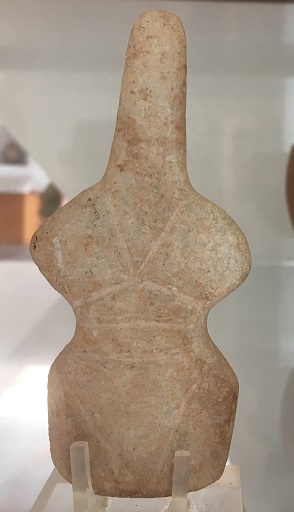
Little is known about the use of these “frying pan” pottery vessels often decorated with spirals or suns.
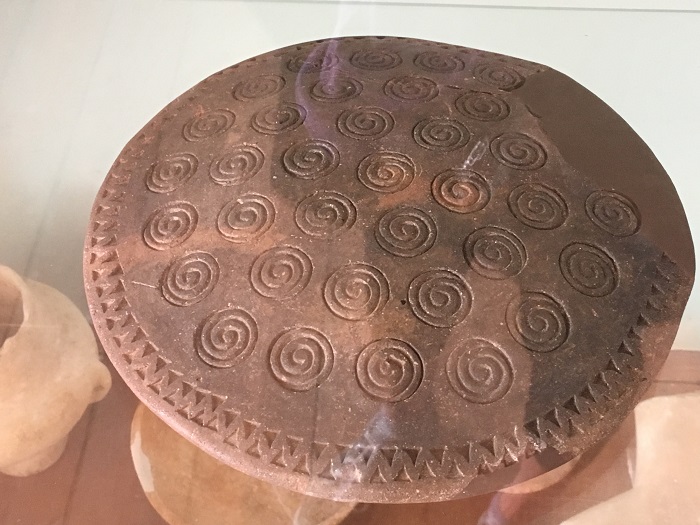
These sleek Cycladic “collared vases” of marble also look eerily like modern art.
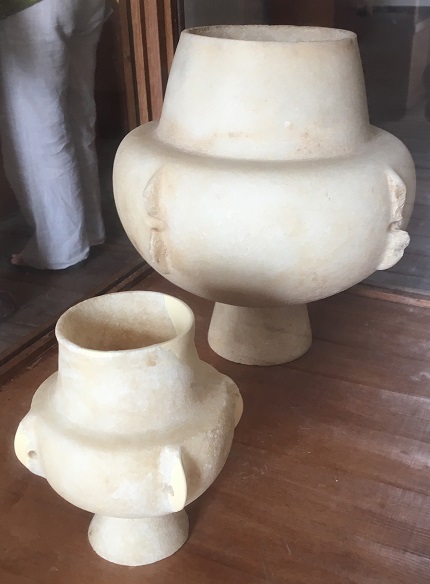
Animal figures always seem to be important. Octopus and squid designs on pottery are common throughout the islands. (see top photo) This engaging pig-shaped vessel was dated from Early Cycladic around 2500 B.C.:
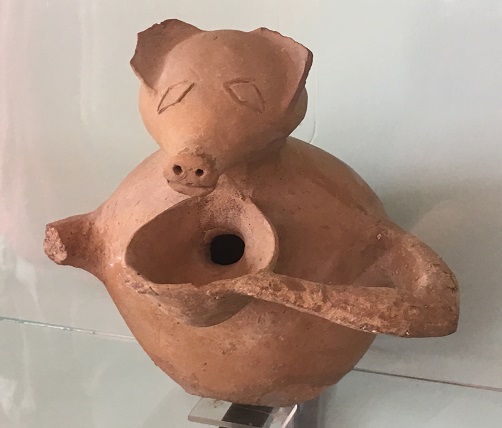
There were also large, unornamented pottery storage vessels:
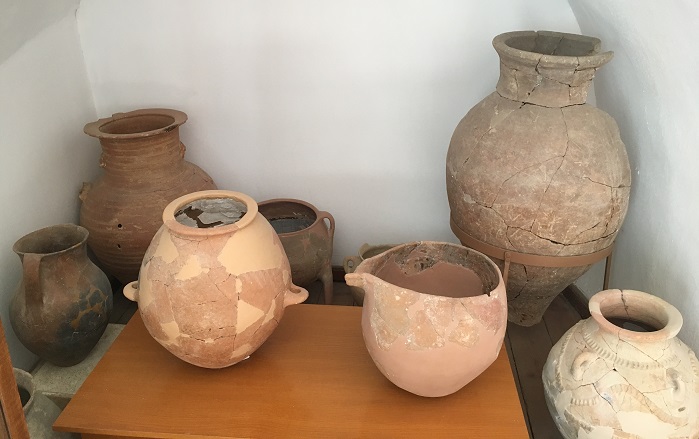
The Mycenaean period left this ram-shaped rhyton from the 13th century B.C. Grotta is a site near the museum.
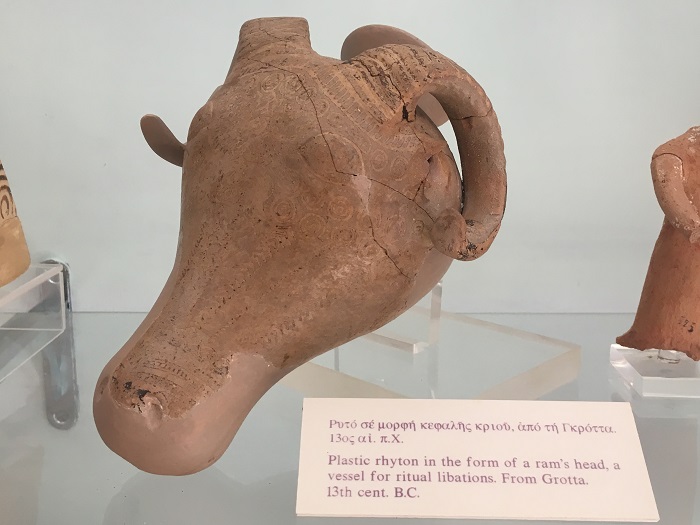
Also from the same period are these artifacts:
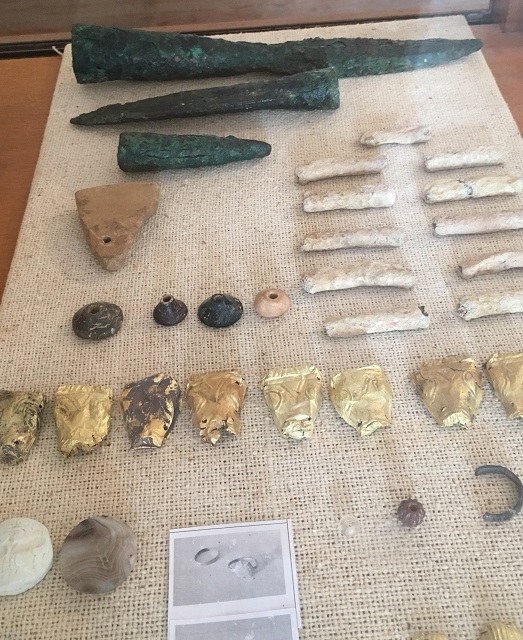
We’ll save the later periods of art from the Geometric through Roman periods for an upcoming blog post. Next week, join us for yet another hair-raising drive around the rugged north shore of Naxos to find a giant partly-carved Kouros statue that was abandoned on the cliffside over the sea.
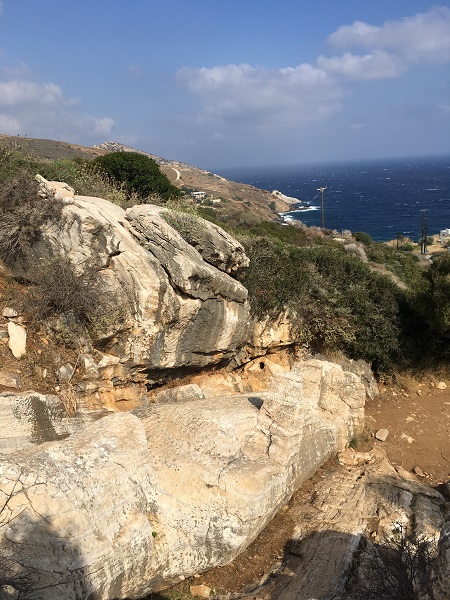
*****
You will find The Rambling Writer’s blog posts here every Saturday. Sara’s latest novel from Book View Cafe is available in print and ebook: The Ariadne Connection. It’s a near-future thriller set in the Greek islands. “Technology triggers a deadly new plague. Can a healer find the cure?” The novel has received the Chanticleer Global Thriller Grand Prize and the Cygnus Award for Speculative Fiction. Sara has recently returned from another research trip in Greece and is back at work on the sequel, The Ariadne Disconnect. Sign up for her quarterly email newsletter at www.sarastamey.com

1 thought on “The Rambling Writer Explores More Greek Islands, Part 26: Naxos Museum”